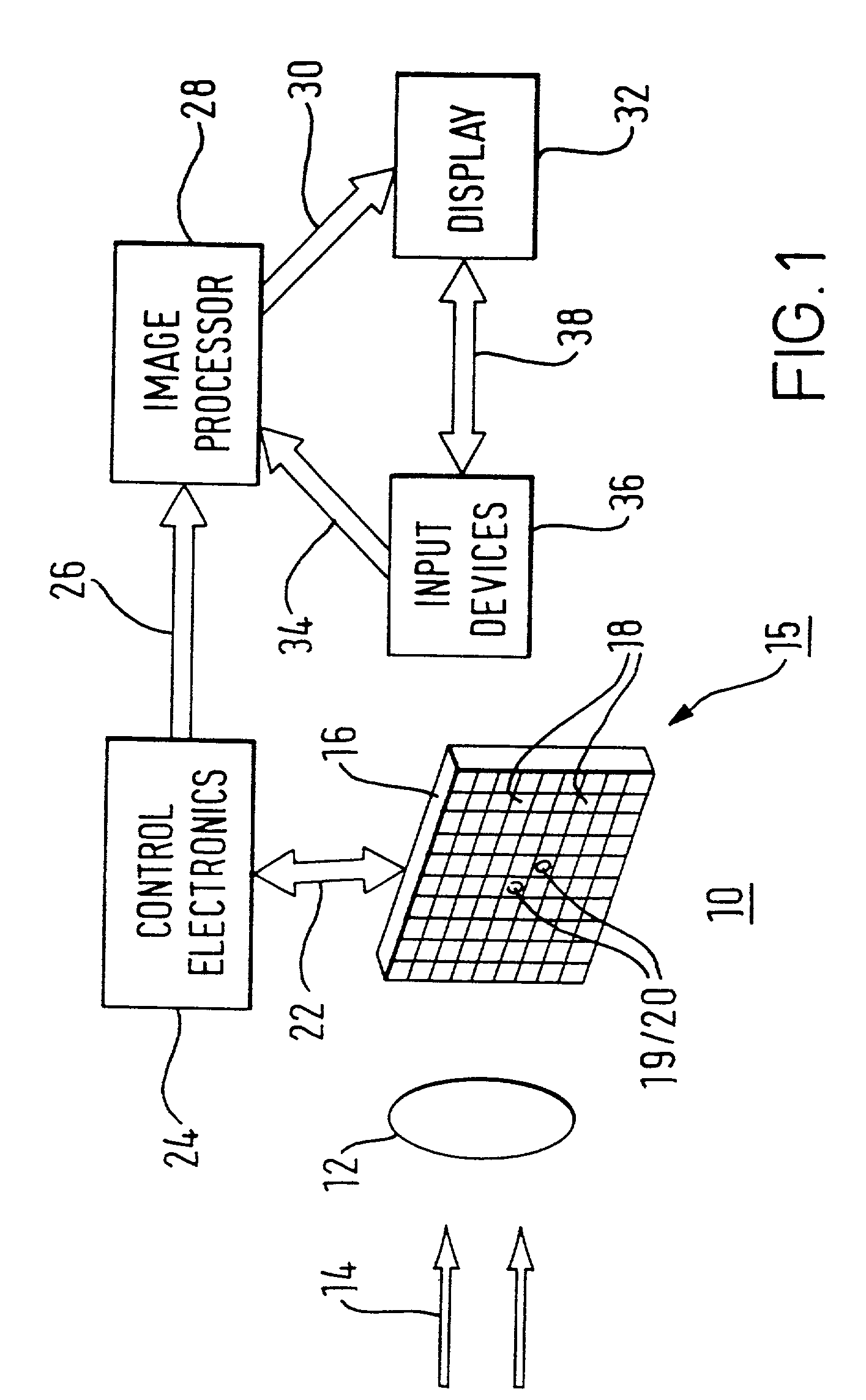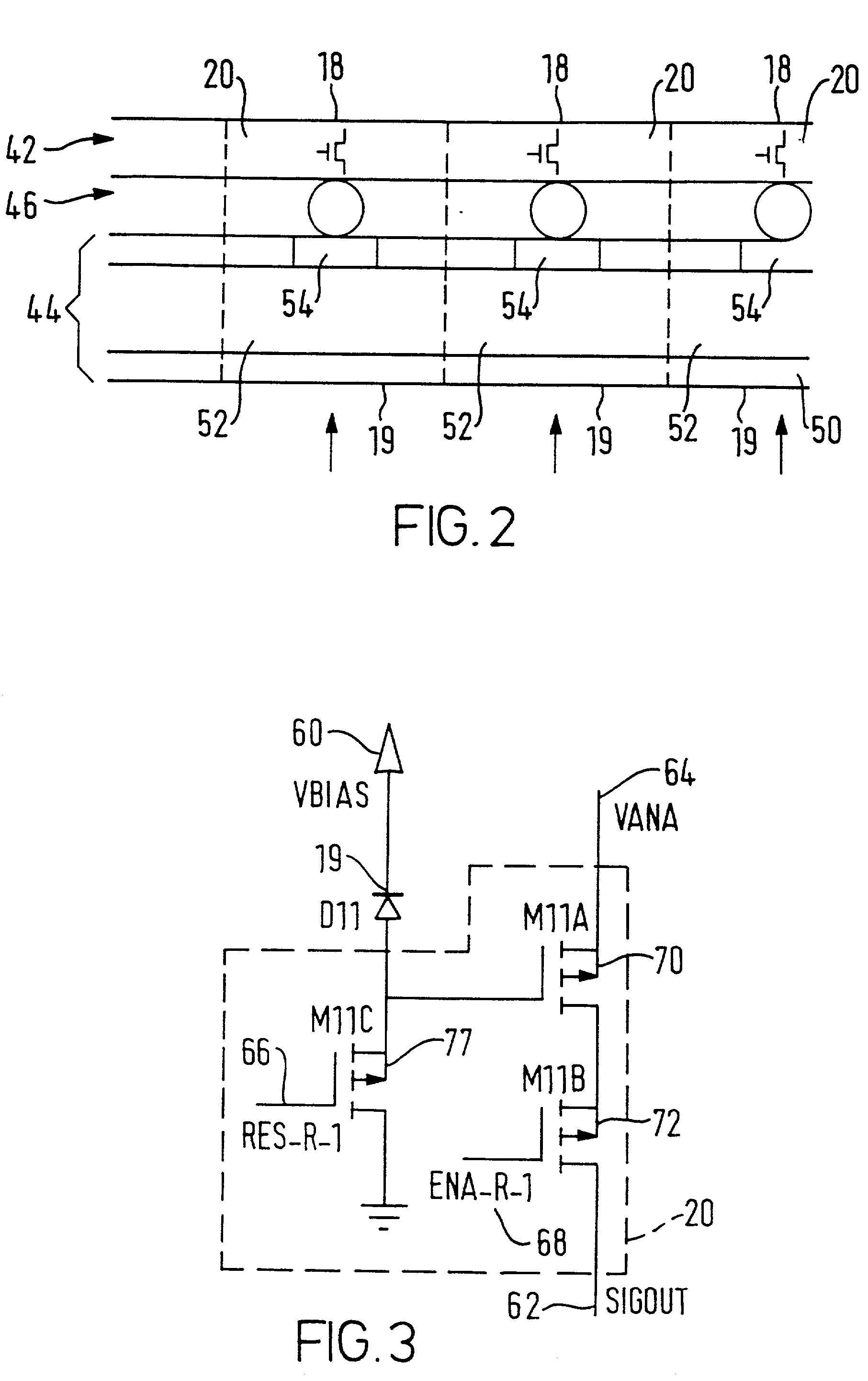Modular imaging apparatus
a module imaging and apparatus technology, applied in the field of imaging apparatus, can solve the problems of limiting the maximum size of monolithic detectors to a few square centimeters, unable to recover lost information, and not being able to address the replacement of components
- Summary
- Abstract
- Description
- Claims
- Application Information
AI Technical Summary
Benefits of technology
Problems solved by technology
Method used
Image
Examples
Embodiment Construction
[0058] Exemplary embodiments of the invention are described hereinafter, by way of example only, with reference to the accompanying drawings.
[0059] FIG. 1 is a schematic representation of an example of an imaging system 10 as described in the Applicant's International application WO 95 / 33332 for radiation imaging of an object 12 subjected to radiation 14. The radiation may, for example, be X-ray radiation and the object 12 may, for example, be a part of a human body. The imaging device comprises an imaging array 15 including at least one Active-pixel Semiconductor Imaging Devices (ASID) 16. Although only one ASID 16 is shown schematically in FIG. 1, the imaging array will typically include a plurality of imaging devices 16. Each imaging device provides a plurality of image, or pixel cells 18. Each imaging device directly detects high energy incident radiation such as X-rays, .gamma.-rays, .beta.-rays or .alpha.-rays and accumulates at each pixel cell, by means of a randomly accessib...
PUM
 Login to View More
Login to View More Abstract
Description
Claims
Application Information
 Login to View More
Login to View More - R&D
- Intellectual Property
- Life Sciences
- Materials
- Tech Scout
- Unparalleled Data Quality
- Higher Quality Content
- 60% Fewer Hallucinations
Browse by: Latest US Patents, China's latest patents, Technical Efficacy Thesaurus, Application Domain, Technology Topic, Popular Technical Reports.
© 2025 PatSnap. All rights reserved.Legal|Privacy policy|Modern Slavery Act Transparency Statement|Sitemap|About US| Contact US: help@patsnap.com



